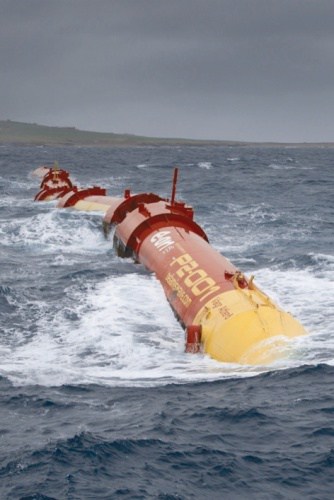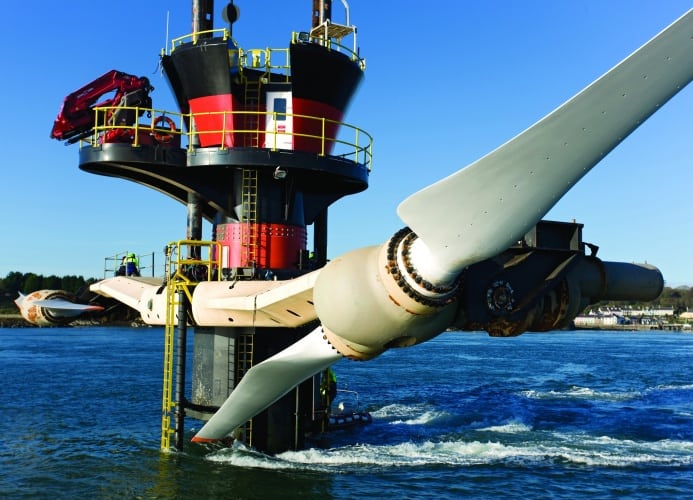One of the few sectors where British engineering genuinely leads the world – marine energy – was hit by a double whammy of bad news this week.
First, one of the country’s leading marine energy firms, the 16-year-old Pelamis Wave Power, announced it was going into administration after failing to secure enough funding to continue development of its Wave Energy Converter – the first commercial-scale wave device to generate power for the grid.

Then, Siemens announced it was getting out of the marine energy business by selling Marine Current Turbines, which – originally as an independent company – designed and built the first grid-connected tidal energy device, SeaGen.
Siemens said it was taking too long for the technology to become commercial and that, while a tidal industry of ‘critical size’ would develop in the near future, it would only ever represent a niche market for Siemens.
Immediately the sceptics and deniers lined up to decry the various tidal and wave devices as expensive, unworkable and unnecessary technologies, to say that their failure was inevitable. But to write off the entire nascent industry so quickly on the basis of two setbacks would be foolish.
Firstly, despite the potential loss of one of the sector’s most prominent companies and the withdrawal of another international engineering giant (two years ago Rolls-Royce also sold their tidal energy business to Alstom), there are numerous other firms still pursuing the prize of profitable marine generation.
The European Marine Energy Centre (EMEC) lists over 250 wave and tidal energy technologies under development, with over 50 in the UK alone. A glance at the client pages of EMEC’s website gives a flavour of the variety of engineering ideas that are being explored.

With so much design divergence, some consolidation in the market is inevitable and we’ll likely see many more companies go bust before a more standardised set of approaches emerges.
It’s worth remembering also that the first windfarm, built by US Windpower in 1980, was deemed a technological failure and the company eventually went bust. Today, however, onshore wind is so well-established that it is approaching price parity with fossil-fuel generation.
Certainly, the maturation of marine energy technology is taking far longer than one would hope - like nuclear fusion it forever seems to be 20 years or so away. But the inherent challenges of the ocean environment mean it is by far the most difficult renewable technology to design and operate and was inevitably going to lag behind the relatively low-hanging fruit of solar and onshore wind.
The particular problem that Pelamis has suffered isn’t necessarily a technical one but rather a lack of appetite from private investors. This doesn’t mean there is no commercial potential for marine generation but that, in a time of continued global economic instability and falling oil prices, investors deem the technology too risky to commit the necessary funds to its development.
As a result, more public sector support is needed - and shortly after Pelamis’s announcement the Scottish government revealed it would be providing just that in the form of Wave Energy Scotland, a new body to promote innovation in the industry.
Both Edinburgh and Westminster are keen to see the creation of a new industry that can both improve energy security while reducing carbon emissions and help rebalance the economy through greater manufacturing and exports, and thus remain committed to grants and subsidies (although undoubtedly the sector will always argue more is needed).
And private investment hasn’t dried up completely. In Swansea, plans for an alternative form of marine generation - a tidal lagoon - have just received £100m of investment from the Prudential insurance firm.
Whether marine energy will ever deliver on its promise of large-scale, regular and clean generation for an island with one of the biggest ocean resources in the world remains to be seen, and will ultimately depend on the mood of investors, government and the public in the fluctuating economic and political climate, as much as the inherent limitations of the technology itself. But let’s not rush to do down what could still be a genuine British success story.




Glasgow trial explores AR cues for autonomous road safety
They've ploughed into a few vulnerable road users in the past. Making that less likely will make it spectacularly easy to stop the traffic for...